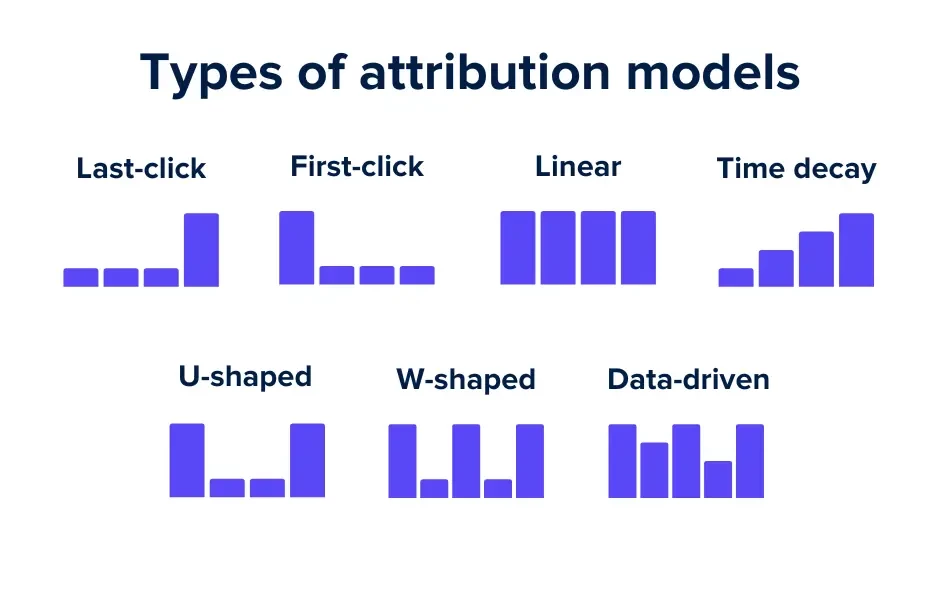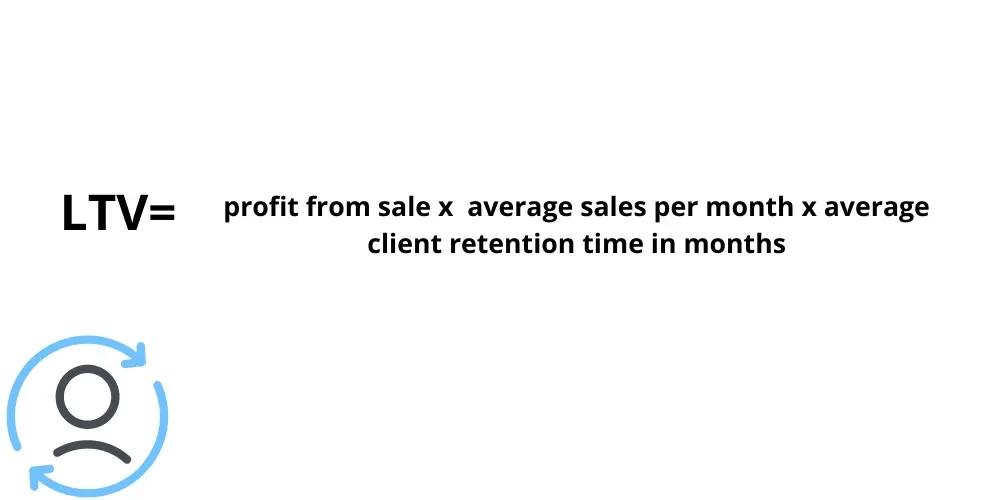Multi-Channel Attribution
Most customers don’t convert after one click. They notice a brand on social, Google the name a week later, open an email, and finally buy after a retargeting ad. Multi-channel attribution is simply a way to understand which parts of that journey actually helped. When you can see what moved the needle, you can spend smarter and create a smoother path to purchase.
What is Multi-Channel Attribution?
Multi-channel attribution is the practice of sharing credit for a conversion across the marketing channels that contributed to it. Instead of giving 100% of the credit to the last click, it considers the full customer journey and spreads credit across touchpoints like paid social, search, email, affiliates, and SMS.
Think of it like a relay race. One runner (a TikTok video) gets the baton started. Another runner (a blog post from SEO) keeps it moving. A third runner (your email) hands it off to the finisher (branded search). Multi-channel attribution seeks to determine the exact value each marketing step brought to achieve success.
The system requires tracking user interactions through UTMs and pixels while connecting these events to individual users via first-party data before selecting an attribution modeling that matches your business needs. The resulting output provides more than visual appeal because it delivers actionable channel performance data for budget optimization, cross-channel campaigns planning and personalized customer experiences.
Benefits of Multi-Channel Attribution
1) Better budget allocation. When multi-channel attribution shows that retargeting and branded search lift conversions only after an initial social touch, you can fund the entire funnel instead of starving awareness.
2) Realistic performance benchmarking. It prevents over-crediting of low-funnel channels that are closest to the conversion. Your marketing program stops penalizing channels whose value is “assistive” but crucial.
3) Lower CAC and improved efficiency. By revealing waste and overlaps, multi-channel attribution helps reduce customer acquisition cost (CAC) and raise marketing ROI and return on ad spend (ROAS) without necessarily spending more.
4) Stronger experimentation culture. With attribution in place, you can test new channels and see the ripple effect in the conversion path, not just in the last step.
5) Customer-first insights. Seeing the full journey enables a more personalized buyer's experience and tighter alignment with your customer profile—what they respond to, and when.
How Multi-Channel Attribution Works
The mechanics are simple to describe and tricky to perfect.
- Collect touchpoint data. Implementation of tagging and conversion tracking needs to occur throughout all marketing channels. The tracking system should include UTM parameters, ad platform pixels, CRM events and server-side logs. The use of first-party data becomes essential because it provides protection against browser updates and data privacy regulations.
- Unify identities and sessions. Stitch interactions from the same person across devices and browsers. Identity resolution can leverage login events, hashed email addresses, or server-based IDs to reduce cross-device blind spots.
- Model attribution. Apply a multi-channel attribution model to distribute credit—first-click, last-click, linear, time decay, position-based, or algorithmic. Each model answers the question, “Who gets how much credit?” in a different way.
- Analyze and optimize. Roll up results by campaign, creative, audience, and channel. Reallocate budget, recalibrate bids, and refine journey orchestration based on the insights. Repeat frequently.
When you operationalize multi-channel attribution, the magic isn’t only the model—it’s the habit of diagnosing the journey end-to-end and acting on it.
Multi-Channel Attribution Models

There is no universal winner. Pick a model that mirrors how your buyers actually buy, then validate with experiments.
First-Touch vs. Last-Touch Models
First-touch attribution gives all credit to the first recorded interaction. It is useful for top-of-funnel diagnostics: which channels are best at introducing your brand?
Last-touch attribution or last-click attribution gives all credit to the final interaction. It is straightforward and common in ad platforms, but it routinely overweights branded search and retargeting while undervaluing discovery channels.
These are easy to implement but oversimplify multi-step buying behavior. Still, many teams start here to establish baselines before moving to a richer attribution modeling approach.
Linear Attribution
The linear attribution model gives equal credit to every touchpoint. It’s fair when your journey is long and no single moment stands out. The drawback: it can flatten genuine differences in impact. If an email cart reminder was decisive while a banner ad barely registered, “equal credit” won’t reflect reality.
Time Decay Model
The time-decay model gives more weight to interactions closer to the conversion. Use it when recency truly matters—such as during short consideration cycles or promotional spikes. Be careful not to re-create a last-touch bias in slow cycles where early education (content syndication, influencers) carries real weight weeks before purchase.
Position-Based (U-Shaped)
The position-based, or U-shaped, model typically assigns heavier credit to first and last touches (for example, 40% each) and spreads the rest across the middle interactions. It recognizes two pivotal moments: discovery and decision. For many B2C journeys, this mirrors reality better than linear or single-touch.
W-Shaped & Full-Path Models
W-shaped expands the U by adding another anchor touch—often the lead creation or a key micro-conversion (e.g., trial start). Full-path goes further, distributing credit across first touch, lead creation, opportunity creation, and close. These are especially useful in B2B or subscription funnels with defined marketing funnel stages and sales involvement.
Data-Driven Attribution
Data-driven attribution uses a data-driven approach—statistical or machine learning methods—to learn how combinations of touches change the probability of conversion. It can account for channel interactions and saturation effects. When implemented with robust first-party data, it is often the most accurate. The tradeoffs are higher data requirements, more complex maintenance, and the need for continuous validation against holdout tests.
Tip: It’s fine to run more than one multi-channel attribution model in parallel for different decisions. For example, use position-based for budgeting and data-driven for creative mix testing.
Note: If you’re documenting a multi-channel marketing model for leadership, be explicit about why you chose it and how you’ll validate it.
Multi-Channel Attribution vs. Multi-Touch Attribution
These two ideas are siblings, not twins.
- Multi-channel attribution rolls up results by channel—email, paid search, social, and affiliates. It answers the question, “Where should we place our budget across the stack?”
- Multi-touch attribution (MTA) zooms in on the specific touchpoints within and across those channels—a particular Facebook ad set, a specific email click, a product page view from organic search. It answers, “Which exact messages and steps are doing the heavy lifting?”
Here’s a quick example. Let’s say a customer sees a YouTube ad, clicks an influencer link, signs up from a blog post, then buys after a cart reminder email. Multi-channel attribution will tell you how video, affiliates, SEO, and email contributed overall. Multi-touch attribution goes deeper, showing which video campaign mattered, which influencer link worked, and which email subject line closed the sale.
In practice, most teams start with multi-channel attribution to get budget direction right, then use MTA to fine-tune frequency, creative, and sequencing. Together, they keep strategy (where to invest) and execution (how to execute) aligned.
Challenges of Multi-Channel Attribution
Data Privacy & Tracking Limitations
Tracking is not as simple as it used to be. Browsers limit cookies, mobile platforms restrict identifiers, and data privacy regulations demand consent and clarity. The result: some interactions are harder to see. The antidote is a stronger foundation of first-party data and more server-side conversion tracking. Encourage logins, use hashed emails where appropriate, and be transparent about what you collect and why. You’ll earn trust and keep enough signal to make good decisions.
Misattribution of Conversions
It’s easy to give too much credit to the last thing a customer touched. It’s also easy to double-count when one person looks like three people across devices. Both lead to bad budget calls. Reduce errors by standardizing UTMs, stitching identities where possible, and regularly comparing different models (last click, linear, time decay, position-based). Layer in lift tests or holdouts to sanity-check what the model claims. If real-world tests disagree with the model, trust the tests and adjust.
Offline/Cross-Device Attribution Gaps
Some steps live outside your analytics tools: a store visit, a phone order, or a desktop discovery followed by a mobile purchase. Close the gap with practical tools like unique coupon codes, call tracking numbers, CRM integrations, and quick post-purchase surveys that ask “What first brought you here?” For cross-device behavior, lean on login events and privacy-safe IDs so you can connect sessions without guesswork. The goal is not perfection; it’s having enough coverage to spot patterns and act on them.
Implementing Multi-Channel Attribution: Best Practices
Data Collection & UTM Tracking
Start by making the data trustworthy. Enforce a strict UTM governance policy: consistent utm_source, utm_medium, and utm_campaign values across all cross-channel campaigns. Document names for experiments and creatives to keep reporting readable. Where possible, capture events server-side to stabilize conversion tracking against browser limitations, and unify web analytics with CRM and purchase data. This single source of truth makes multi-channel attribution actionable rather than academic.
Focus early on identity resolution. Encourage logins, stitch sessions with hashed emails, and reconcile leads and orders in your warehouse. The more complete your first-party data, the more accurately multi-channel attribution reflects reality. Don’t neglect QA: test every new landing page, ad placement, and email link before launch.
Choosing the Right Attribution Model
Pick the simplest model that matches your journey. If discovery and decision dominate, try a position-based approach. If recency matters, try time decay. If your cycle is complex and your data quality is high, explore data-driven attribution. Align the model with business questions. Budgeting by channel? A channel-level multi-channel attribution view may suffice. Optimizing sequences and messaging? Layer multi-touch attribution.
Plan to revisit your choice. As channels evolve or as you introduce new formats (e.g., connected TV, influencers, or affiliates), your initial model may drift from reality. Run periodic holdout or geo-split tests to validate that the model’s guidance actually improves results. If model outputs and lift tests disagree, adjust the weights or switch models. A multi-channel attribution model is a means to better decisions, not a doctrine.
Analyzing Results & Optimizing Marketing Spend

Don’t look at attribution in isolation. Pair it with business outcomes like LTV and payback. If multi-channel attribution shows that upper-funnel video reduces CAC after 30 days, measure downstream cohorts to verify. Use the insights to rebalance spend, but move gradually and keep a control group to avoid whiplash.
Push insights into activation. If email interactions appear early and influence later search conversions, redesign journeys to capture emails sooner and trigger nurturing that aligns with what searchers seek. If affiliates spark first exposure but lack closing power, bundle them with retargeting that mirrors the initial hook. Tie learnings to creative, frequency, and audience refinement; that’s where attribution translates into revenue.
Finally, operationalize reporting. Create a recurring cadence to share multi-channel attribution insights with stakeholders. Keep dashboards simple enough to act on, but detailed enough to track changes in channel performance over time. Attribute, allocate, test, repeat.
Final Thoughts
Multi-channel attribution isn’t a magic formula—it’s a practical way to see which parts of your marketing actually help people decide. Start small: clean up UTMs, make sure key events are tracked, and pick a simple model that matches how your customers buy. Then check the results against reality with lift tests or holdouts. If something doesn’t add up, adjust the model, not your goals.
The system requires treatment as an active network that generates new pathways while privacy standards evolve and customer routes transform. The team should receive your findings while you use acquired knowledge to direct budget allocation, creative development and marketing schedule. Your team will develop better decision-making skills through multi-channel attribution, which helps you eliminate unnecessary work and create a better customer buying experience. The actual benefit of multi-channel attribution emerges through enhanced decision-making abilities, which produce sustained business expansion.
Join Our Blog Newsletter!
Stay updated with our latest email marketing tips, product news and case studies.
Terms in the same category
Popup (or widget) ROS (Return on Sales) Customer Journey Marketing Repeat Purchase Rate Revenue Optimization